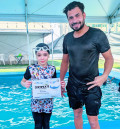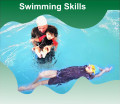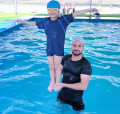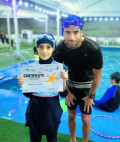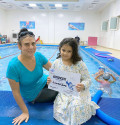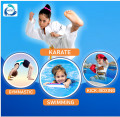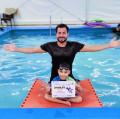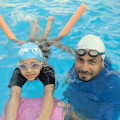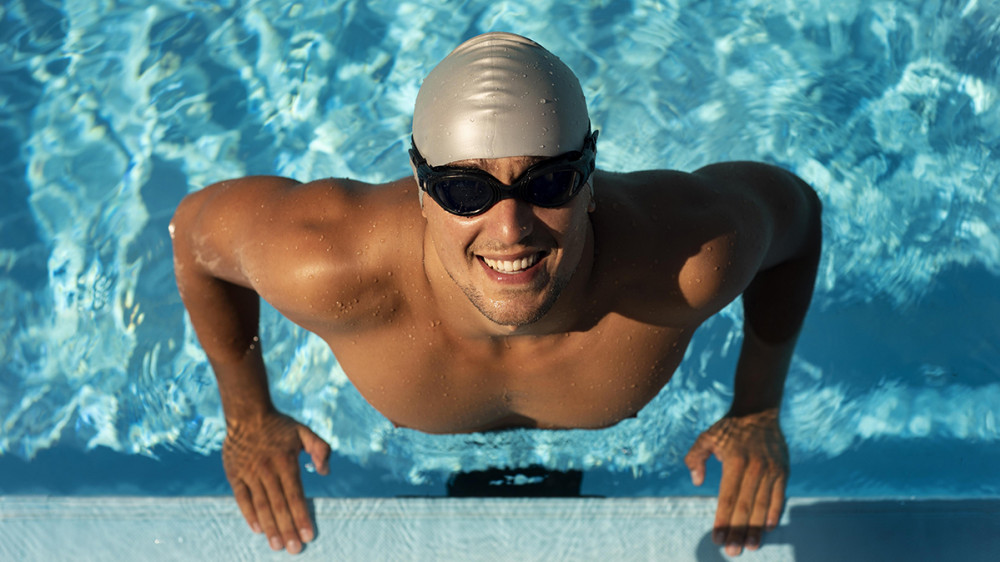
Adopt the FITT PRINCIPLE for an enjoyable and successful swimming experience
2023-01-16 - Swimming
Proper technique and knowledge in swimming is significant as it can help prevent injuries, improve efficiency, and increase overall performance. As with any exercise, it is important to start at a level that is appropriate for your fitness level and work your way up gradually. Additionally, having proper technique and knowledge of the different swimming strokes can help swimmers to swim faster, farther, and with less effort.
FITT (Frequency, Intensity, Time, and Type) is a guideline that helps individuals create safe and effective exercise programs. It is important to apply the FITT principle to swimming because it can help swimmers avoid overuse injuries, improve their technique, and reach their fitness goals. FITT helps ensure that your body reaps the full benefits of regular workouts. The FITT abbreviation stands for Frequency, Intensity, Time and Type and these four factors can be best thought of as a set of guidelines to follow for achieving best results from workouts. These factors are often used in relation to low to moderate exercise training levels and can help particularly with cardio and resistance training. Applying the FITT factors into your mindset and workout regime will really help you to reap those benefits, whatever level you are at with your fitness.
Therefore, proper technique and knowledge of FITT principles can help swimmers to have a more enjoyable and successful swimming experience.
FITT Principle:
Frequency
Be realistic when you set the frequency of your workouts in your mind, whether its three times a week, to five, to six. Often, when we start out on our fitness journey, we are ambitious, aiming to work out once a day or at least most days of the week. Sometimes this can leave us burned out and giving up way too early on before we see the benefits and results of our workouts. But in the case of strength and resistance, bear in mind, that you should be allowing yourself a day in between workout days so that you can recover. At the beginning of your journey, you aim for two to three workouts a week, and build it up to three to four times if you can.
Intensity
Always remember to try and keep your intensity at a level between moderate to vigorous. If you feel you do not fall into that category of healthy and fit individual start of lighter, then build yourself up to these intensity levels. It can be unhealthy and wholly unbeneficial for your body to be hitting the gym at high frequency levels while expecting to carry out high intensity workouts every time. Allow yourself longer resting times/days between high intensity workouts. it is important to stay hydrated during those high intensity workouts, or any workout.
Time
The amount of time that you put into your workouts should directly relate to the previous factors and also as to the type of workout you are doing. This is a measure of endurance, an important component of exercise. Ideally most people would get 150 minutes or more of moderate exercise or at least 75 minutes of high intensity exercise a week. For average, non-athletes this is typically divided into 30 minute segments. Make sure that you listen to your body though, not just the timer. Your body will let you know when it’s ready to end the workout, not the clock.
Type
Most often, cardio and resistance training are the two most common exercise types that people participate in. While cardio involves running, to swimming, to hiking, to dancing, resistance can include weightlifting, to push-ups, to sit-ups among others. It is recommended that to truly see the results you desire, that you mix and match your types of exercises, and mix and match with it your frequency, intensity and times.
Benefits of FITT:
The FITT principle helps individuals create safe and effective exercise programs. The benefits of using the FITT principle:
- Improves Cardiovascular Health: By increasing the frequency, intensity, and duration of exercise, the FITT principle can help to improve cardiovascular health and reduce the risk of heart disease.
- Increases Strength and Endurance: By gradually increasing the intensity and duration of exercise, the FITT principle can help to build strength and endurance in the muscles.
- Aids in Weight Loss and Management: By incorporating regular exercise into your routine, the FITT principle can help to burn calories and aid in weight loss and management.
- Reduces Risk of Injury: By gradually increasing the intensity and duration of exercise and varying the types of exercise, the FITT principle can help to reduce the risk of overuse injuries.
- Improves Overall Fitness: By following the FITT principle, individuals can create a well-rounded exercise program that improves overall fitness and health.
- Increases adherence: By gradually increasing the frequency, intensity, time and type of exercise, it makes it more sustainable and less likely to quit.
- Better Performance: By applying FITT principle to training, it helps to improve the performance of the activity.
- Personalization: FITT principle can be personalized for individual needs, goals and fitness level.
FITT allows you to customize your workout plan according to your body’s needs. Adopt these FITT principles, along with a healthy and balanced diet, you will see the short and long-term benefits from your workouts. Here are a few ways to adopt FITT principles and a healthy, balanced diet in swimming:
Frequency: Incorporate swimming into your regular exercise routine. Aim to swim at least 3-4 times a week, with a day of rest in between to allow for muscle recovery.
Intensity: Gradually increase the intensity of your swim sessions. Start with shorter, easier sets and gradually build up to longer, more challenging sets.
Time: Gradually increase the duration of your swim sessions. Start with shorter swims of 15-20 minutes and gradually build up to longer swims of 30-45 minutes.
Type: Vary the types of strokes and drills you do in your swim sessions. This will help to work different muscle groups and improve overall technique.
Diet: A healthy, balanced diet is essential for optimal performance. Make sure to consume plenty of carbohydrates, protein, and healthy fats. Carbohydrates are the primary fuel source for endurance activities such as swimming. Protein helps to repair and build muscle, while healthy fats are essential for overall health.
Hydration: It's important to stay hydrated while swimming, as you lose fluids through sweating and breathing. Drink water before, during, and after your swim sessions.
Recovery: It's important to give your body time to recover after swim sessions. This means getting enough rest and sleep, as well as stretching and foam rolling to help release muscle tension and improve flexibility.
.







.jpg)























































